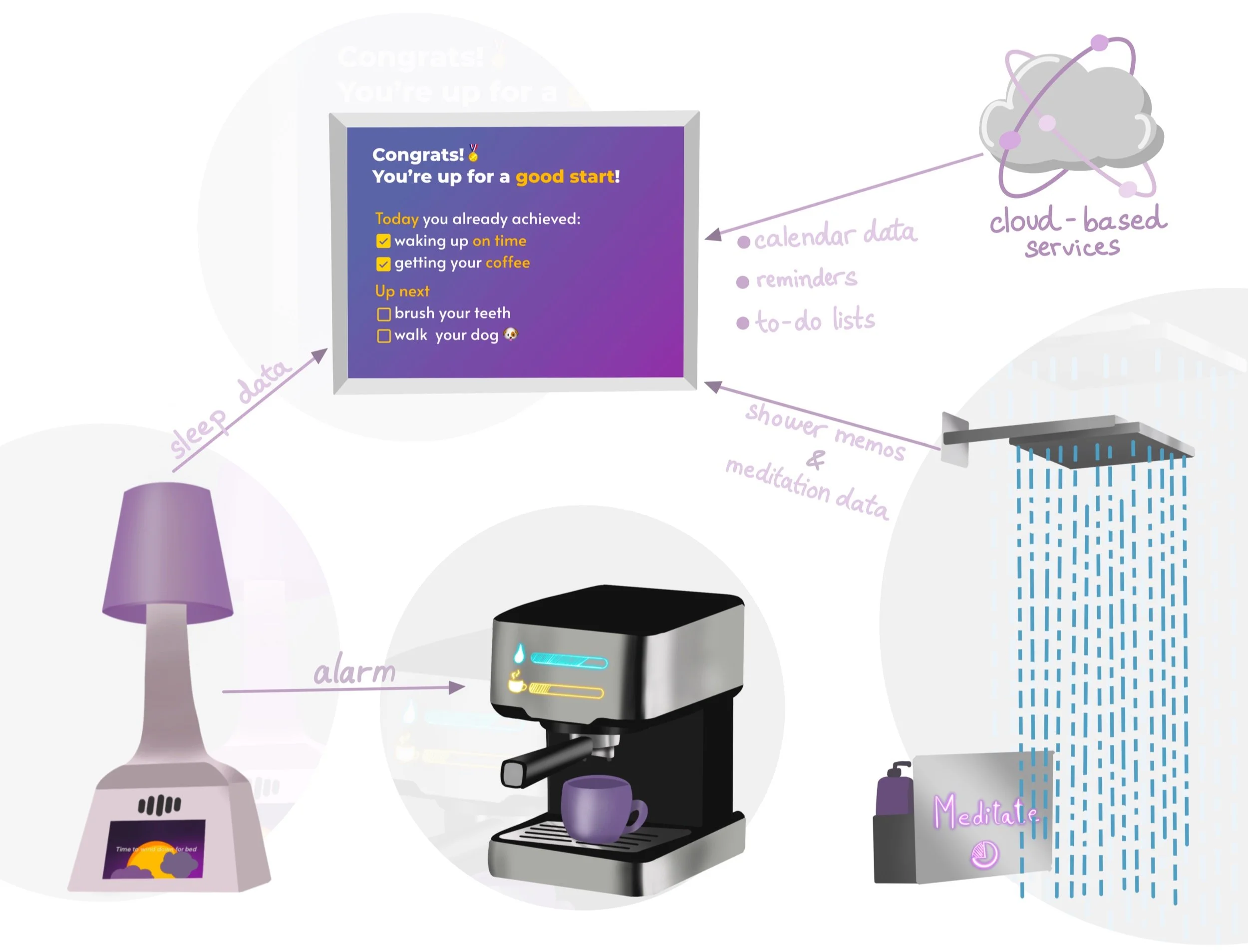
Smart Home System
Design Case
Concept
The goal of this smart home system is to help people who experience depressive symptoms build healthy daily routines.
By giving people the tools to plan their day and practice self-discipline, we give them the power to achieve the goals they set for themselves.
As a result, it can help people take control over their lives.
The system is focused on helping people achieve a healthy sleeping routine, targeting the users’ main challenges:
Falling asleep
Waking up restfully and gradually
Creating motivation for the first part of the day
Maintaining a constant sleeping schedule.
Video prototype
Product Design structure
Problem framing
The target user group are people who suffer from depressive symptoms, who live alone, and who have trouble maintaining healthy routines.
By interviewing potential users, we discovered that most of them had trouble maintaining a healthy sleep routine.
For some people with depressive symptoms, even the simple task of getting out of bed in the morning can become a challenge.
The research started with literature reviews, which showed a correlation between sleep quality and depressive symptoms—a healthy sleep schedule can significantly reduce these symptoms. Therefore, we focused on designing a product that can help people improve their sleeping routines.
Design Choices
ECOSYSTEM
The system incorporates 4 devices, with specific functionalities for each room.
They work together to help the user wake up gradually and become alert in the first part of the day.
The purpose of this smart home system is giving the users the power of getting things done.
It promotes their confidence by keeping track of their small victories.
It can help users to set their own realistic goals, and encourage their motivation and consistency.
What I learned 🚀
I learned that digital communication doesn’t necessarily require words or buttons on a screen. It can transmit a message through subtle movements. Subtle animations can communicate intent, instead of being demanding.
By researching a more complex kind of literature, related to the medical field—when trying to understand depressive symptoms—I learned that background knowledge is very important, especially when dealing with a specific user group. It helped me empathise with the users and head into the right direction in the interview phase.
During this project, I improved my skills of animating using Figma. This inspired a new interest which turned into another project that I will publish soon.
MY Role
✍🏻 Concept sketches
📐 High-fidelity concept illustrations (function, behaviour, structure)
🖥 UI Design for the lamp and picture frame interface
🧩 Designed the way in which users can navigate through the interface, to guide them towards achieving their goal, as well as including the sense of progress.
⚡️Designed the animations for the Lamp Interface
🎬 Video prototype—which I produced, filmed, and edited—the goal was to show the stakeholders a scenario when the device is being used, and how all the features work together.








